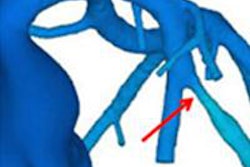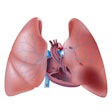Tuesday, December 3 | 3:30 p.m.-3:40 p.m. | SSJ02-04 | Room E450A
High-resolution breast CT produces 3D images that are better than full-field digital mammography (FFDM) and tomosynthesis, and it does so at acceptable dose levels for screening procedures, according to German researchers.CT can provide good soft-tissue discrimination and dynamic contrast-enhanced studies of the breast, but spatial resolution tends to be insufficient and the radiation dose is beyond limits set for screening, according to Dr. Ruediger Schultz-Wendtland, from the University of Erlangen-Nuremberg, and colleagues. The researchers investigated whether the same would be true with a high-resolution breast CT system.
Schultz-Wendtland's group used a breast CT prototype that included a cadmium telluride detector with a 100-µm pixel size and single photon-counting electronics. The team compared the prototype's performance to digital mammography and tomosynthesis devices, using a phantom; tests focused on whether the devices could visualize fibers, masses, and specks embedded in the phantom down to 0.75 mm, 0.50 mm, and 0.24 mm, respectively, as recommended by the American College of Radiology (ACR). The researchers also evaluated image quality and dose for each device.
The high-resolution breast CT system had better than 100-µm spatial resolution at average glandular dose levels below 5 mGy. Digital mammography and tomosynthesis visualized the embedded material as required by ACR, but breast CT went even further, visualizing fibers as small as 0.4 mm, masses of 0.25 mm, and specks of 0.16 mm, the researchers found.




















